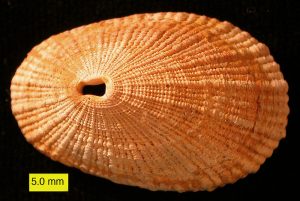Creatures with brains (more or less) are upon us! The polyplacophorans and monoplacophorans are usually covered early in a mollusk series because they have the least derived characters. Not much online about them for us. Gastropods, though, have their web fans. Read through this description of the poisonous gastropod Conus, its biology, and the medical aspects of its toxins. See how many people have been killed by this vicious snail. (“Vicious snail”, you say? Who would guess? Here’s an excellent National Geographic video of Conus catching and eating a fish.) You will be amazed by this website loaded with photos of gastropods in systematic order.
As a preview to cephalopods, check out The Cephalopod Page. It is a joy to read. This website contains numerous links to other equally enthusiastic cephalopod pages. The Tree of Life Project has an excellent page on cephalopods; it concentrates on their systematics, but also has good information on cephalopod biology. We don’t want to miss the excitement of the Search for the Giant Squid, which we don’t have to if we visit this Smithsonian page. The Smithsonian also has a cephalopod page for professionals and others interested in these creatures. There are many pages devoted to fossil cephalopods, such as this one on ammonites of the Fox Hills Formation in north-central North America. TONMO (The Octopus News Magazine Online — who knew?) has an informative page on nautiloids. Here’s a reference page for coleoids. As a bonus, watch a short video of baby cuttlefish hatching. This very cool video of a blue-ringed octopus was posted on the Scientific American site. Cephalopods — gotta love ‘em.
Research paper titles are due in class on Thursday

A limpet gastropod from the Pliocene of Cyprus.
Geology in the News –
Here’s a nice summary of the latest ideas on the evolution of modern birds. It appears that the Cretaceous extinctions may have sped up their evolution, primarily by selecting for small body sizes which have higher rates of evolution.
Nice rotating globe showing earthquake locations and magnitudes from 2001 through 2015. Note the dramatic activity along the “Ring of Fire” (the Pacific Rim.)
More museum science: A paleontologist studying old ichthyosaur specimens discovered one with remnants of its last meal still preserved. Squid!
